#Testbeds
Explore tagged Tumblr posts
Text
Testbeds recycles mock-ups into investments in public space
Architectural mock-ups are curious creatures. Peeking over construction fences, the isolated chunks of facade often appear like sculptures. However, unlike a Rachel Whiteread cast, once the assemblies have been tested for durability or visual cohesion they are typically thrown away rather than sold at the Gagosian. Designers of the project Testbeds—New Affiliates cofounders Jaffer Kolb and Ivi…

View On WordPress
0 notes
Text

B-50 and Nuclear Powered NB-36
@AcePilotAV via X
#b-50 superfortress#boeing aviation#bomber#nb-36#convair aviation#testbed#aircraft#usaf#aviation#cold war aircraft
44 notes
·
View notes
Text
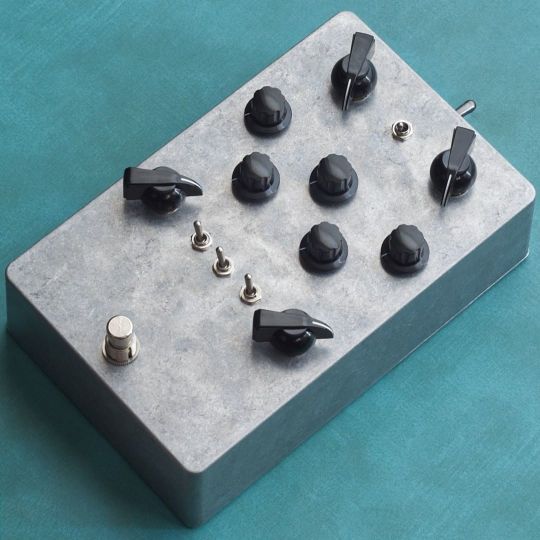
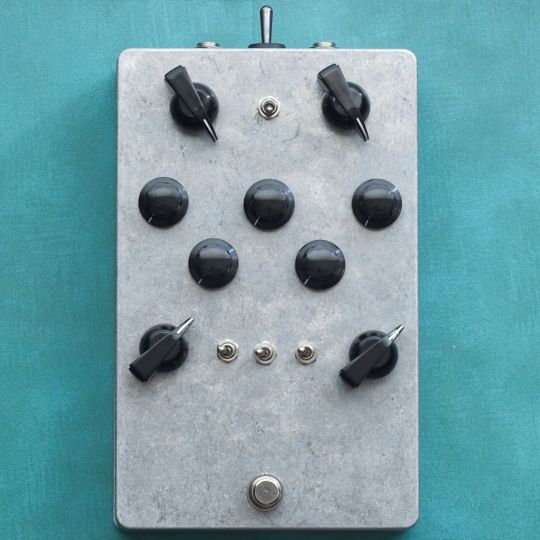
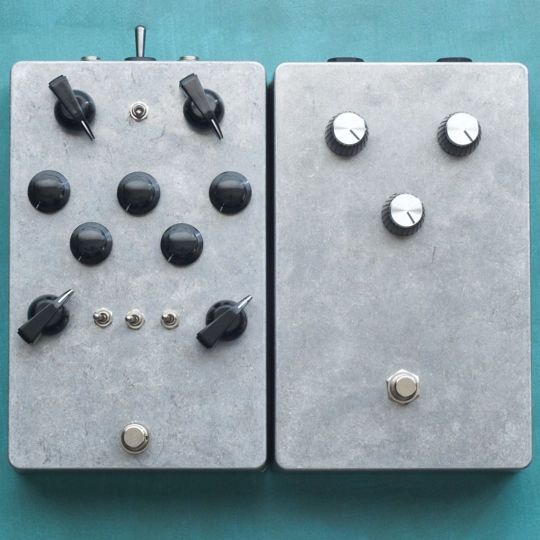


amplified parts - 1590D tonebender prototype and test bed
"The Hammond 1590D: A very large diecast enclosure that is perfect for oversized builds and complex controls. Pictured here is a Mk3 Tonebender prototype that was used to test the layout/function of our Mk3 repro boards, and a WIP test bed for germanium transistors in various fuzz circuits with the hardware installed."
cred: instagram.com/amplifiedparts
47 notes
·
View notes
Text
Februári csemegék

View On WordPress
#Csárdáskirálynő#farsang#gála#Hirschl Laura#Horváth Renátó#jelmezverseny#Keller Márton#Keresztes Gábor#Kőrösi Csaba#Lehetsz király#Lila ákác#MÁZS#Mészáros Árpád Zsolt#Módri Györgyi#musical#operett#színház#Szederjesi Teodóra#Szeles József#tánc#Testbe zárt ima#Veszprémi Petőfi Színház
0 notes
Text
NASA Marshall Engineers Unveil Versatile Low-cost Hybrid Engine Testbed
In June, engineers at NASA’s Marshall Space Flight Center in Huntsville, Alabama, unveiled an innovative, 11-inch hybrid rocket motor testbed. The new hybrid testbed, which features variable flow capability and a 20-second continuous burn duration, is designed to provide a low-cost, quick-turnaround solution for conducting hot-fire tests of advanced nozzles and other rocket engine hardware, […] from NASA https://ift.tt/L2Af8sr
0 notes
Text

A robot on the volcanic surface of Mount Etna, Italy, on July 2, 2017. Etna is a test bed for the approximately three-foot high, four-wheeled machine ahead of a future mission to the moon. It is being conducted by the German Aerospace Centre, the agency which runs Germany's space program.
Antonio Parrinello / Reuters
0 notes
Text

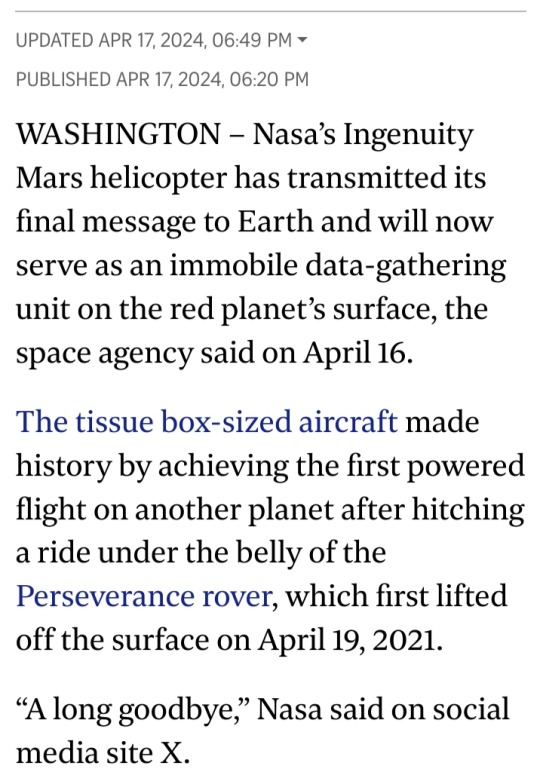

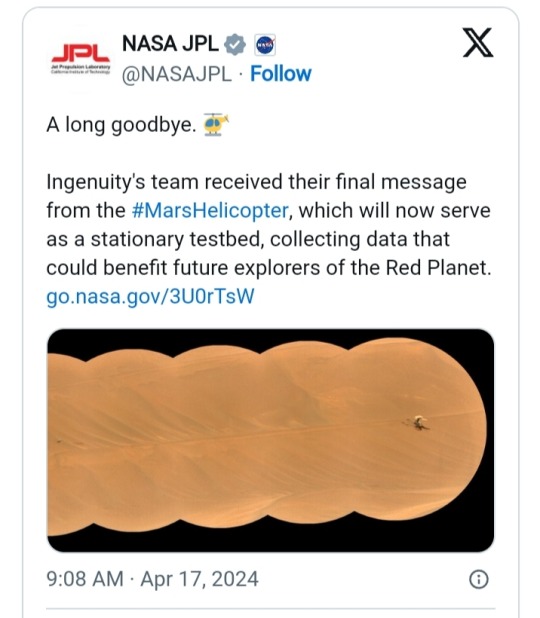

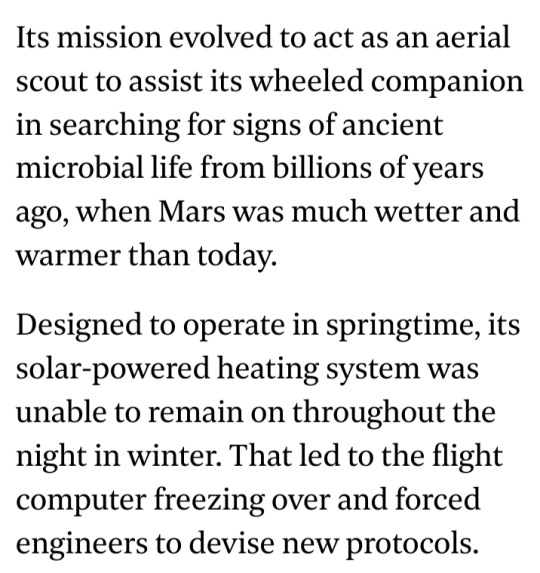

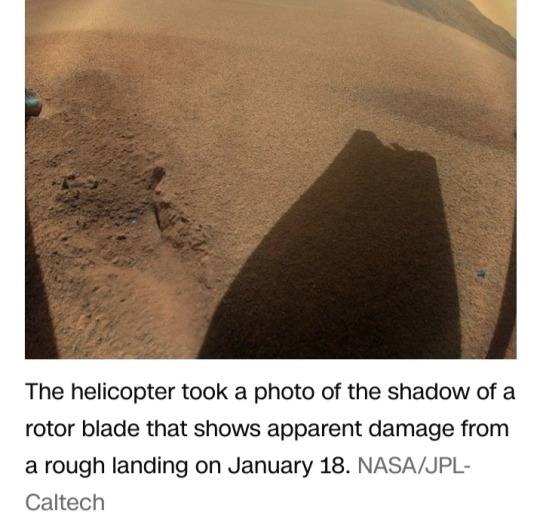

#Ingenuity#NASA#Mars#Earth#Perseverance#Mars Helicopter#stationary testbed#Martian rocks#JPL-CALTECH#red planet#sand ripples#space flight#long goodbye
1 note
·
View note
Text
I suppose I was way overdue to eat shit on the bike
Big fat bandage n all
#this thing is like an x-plane in my cringe mind#a testbed for weird tech#and people fucked up all the time with those#constructing a real snoopy-ass scenario in my head here
1 note
·
View note
Photo

HONEYWELL Boeing 757 testbed London Stansted Airport N757HW See the takeoff video here - https://youtu.be/OjmrgXARllk #Boeing #boeing757 #honeywell #testbed #b757 #757 #futureshaper #airplanes #aviation #aviationphotography #megaplane #new #youtube #youtuber #video #flying #pilots #world #london #stansted #crew#photo #instagramaviation #spotting #airplanelovers #instaplane #photo #instapic #airplane #avgeeks (at London Stansted Airport) https://www.instagram.com/p/CbCl4ZCMpKT/?igshid=NGJjMDIxMWI=
#boeing#boeing757#honeywell#testbed#b757#757#futureshaper#airplanes#aviation#aviationphotography#megaplane#new#youtube#youtuber#video#flying#pilots#world#london#stansted#crew#photo#instagramaviation#spotting#airplanelovers#instaplane#instapic#airplane#avgeeks
0 notes
Text
ENERGY WEAPONS MOUNTED ON PLANES ATTACKING PEOPLE AT NIGHT
I know, you will say it isn't true. Lasers don't exist as weapons. There are no DEWs. The gubment would never do that. Keep repeating what the MSM and Google tells you to say. I'll just drop a mountain of links below 👇 for you to ignore.
US firing up first fighter-mounted laser weapon
The Air Force Is Deploying Its First Drone-Killing Microwave Weapon
Boeing YAL-1 LASER ENERGY WEAPONS used against the WORLD
American fighter planes to have laser weapons by 2020
Raytheon’s Ship-Mounted Laser Weapon Incinerates a UAV in Flight
Directed energy weapons making jump from sci-fi to real world
Directed Energy Weapons
If you wish to continue feel free to copy and paste the rest 👇
High Energy Laser Directed Energy Weapons
https://www.ausairpower.net/APA-DEW-HEL-Analysis.html
Directed Energy Missile Defense in Space ..
https://www.belfercenter.org/publication/directed-energy-missile-defense-space
Directed Energy Weapons: The Silent Killers ..
https://chanakyaforum.com/directed-energy-weapons1/
The US Navy and the Future of Directed-Energy Weapons ..
https://interestingengineering.com/innovation/the-us-navy-and-the-future-of-directed-energy-weapons
DIRECTED ENERGY WEAPON GOLD MINE ...
https://stopthecrime.net/wp/2018/11/18/directed-energy-weapon-and-electronic-warfare-relevant-patents/
They just break them out and they start using them on their own people, by the same people who took an oath to protect this country and its own innocent people. You know what this is don't you? What's happening is "War Crimes," it's crimes against humanity and the punishment for their atrocities is death by hanging or firing squad. And these soulless traitors will get what they deserve. 🤔
#pay attention#educate yourselves#educate yourself#knowledge is power#reeducate yourselves#reeducate yourself#think about it#think for yourselves#think for yourself#do your homework#do your research#do some research#do your own research#ask yourself questions#question everything#dews#government corruption#crimes against humanity#war crimes#treason#evil lives here#news#stranger than fiction#stranger than fiction news#weapons
320 notes
·
View notes
Text






Pioneer 25 Prototype, 2024. A new Extreme H race car powered by a hydrogen fuel cell with a peak output of 400kW (550bhp). The Symbio fuel cell is has been engineered specifically to meet the demands of motor racing, Extreme H represents the first-ever testbed of hydrogen technology in motorsport. Each car in Extreme H features a standardised package of parts from Spark Racing Technology, while allowing teams the flexibility to customise areas such as the front and rear bodywork sections and lights.
#Pioneer 25#Extreme H#prototype#race car#Hydrogen Fuel Cell#2025#new cars#experimental car#test vehicle#electric race car#hydrogen#Spark Racing Technology
206 notes
·
View notes
Note
I've watched one too many defunctland video essay and it's got me thinking: would Walt Disney be more at home in SSC or Harrison Armory? SSC matches his weird perfectionism and warped futurism ideals, but HA matches his idealization and mytholigizing of America's past
SSC for sure. Harrison Armory would quickly tire of him.
I think a lot of people in the Lancer fandom misunderstand who the Armory are and what they're about. They are first and foremost a weapons manufacturer, and they are the only member of the Big Three for whom this is true. For IPS-N and SSC, arms manufacture is a side gig which they just happen to be very good at. For HA, all the other shit they do is the side gig - guns, bombs, mechs, tanks and warships are their core competency.
Even the mechs that have weird tech like blinkspace shielding or gravity manipulation have it because it has a demonstrable tactical use on the battlefield. The Sunzi isn't in mass-production yet - it's a testbed only accessible to a select few pilots, because the Armory wants to make sure it's viable as a product.
Walt Disney was a perfectionist with a highly active imagination. That made him a great animator, but it also made him uncompromising and difficult to work with. His ideas were often completely impractical, but he was extremely slow to accept any dilution of his vision. That's not a good fit for Harrison Armory.
SSC are the absolute definition of do-it-just-because-we-can, money-is-no-object stuffy auteurs. He'd be right at home there.
141 notes
·
View notes
Text

Convair NB-36H experimental aircraft that carried nuclear reactor. It was nicknamed "The Crusader".created for the Aircraft Nuclear Propulsion program, or the ANP, to show the feasibility of a nuclear-powered bomber.Its development ended with the cancellation of ANP program.
@CcibChris via X
21 notes
·
View notes
Text
I haven't made any particular secret of the fact that Eat God is at least 50% a testbed for a hypothetical second edition of Costume Fairy Adventures – not to mention that hypothetical transhuman-magical-girl-emergency-responders idea I've been kicking around for the better part of a decade – and given that it's being written to accommodate a range of (admittedly relatively closely related) premises, I'm curious whether there'd be any interest if I mooshed all of my design notes on it together into a publishable system reference document.
Like, it's basically never going to be suitable for anything that isn't a game about a bunch of fucked up critters running around causing problems, but that can be a fairly broad ambit. That in mind...
121 notes
·
View notes
Text
Tragédia – Összeomlás – Újrakezdés
Fiatal táncos, ez az élete, előtte a karrier, imádja a hivatását. Hirtelen megbénul, nincs ismert oka és nincs gyógymódja. Kérdéses, hogy egyáltalán életben marad-e. Ki tudja akár csak félig–meddig elképzelni, hogy ilyesmi történik az életében? Mit tenne? Feladná? Harcolna? Hogyan? Nem elméleti az első bekezdésben leírt helyzet, nem egy drámaíró találta ki. Az élet írta ezt a drámát. A dráma…

View On WordPress
#újrakezdés#dráma#fesztivál#Horváth Renátó#kapcsolat#Lélektől - Lélekig#Lélektől – Lélekig Színház Gyógyító Erejének Fesztiválja#Testbe zárt ima#tragédia#Veszprém#Veszprémi Petőfi Színház
0 notes
Text
Plain Sight: Pt.1 - Veiled Whispers
Author's Note: After lying about my posting schedule for forever, I finally finished this piece. I kept getting caught up with school and having new ideas to add, but hopefully, this was worth the wait. I've already written the rest of the series and plan to post the next part later this week.
Summary: An unexpected connection between Fernando Alonso and an unconnected, unknown environmental activist blooms into a secretive romance. They bond in the shadows, navigating the pressures of fame and the struggle for privacy in a world where their connection must remain hidden. But apparently, Fernando isn't as good at keeping secrets as he thought...
Word Count: 4.4k
Content Warning(s): Use of the Word Slut, Age Gap (20s/40s), Dodgy Author Knowledge About Mentioned Topics, Briefly Proofread So Please Offer Some Grace!!
Don't Forget to Interact and Follow! Hope You Enjoy!

The hall buzzed with energy and light conversation as advocates, donors, sponsors, and simple celebrities mingled beneath the organization’s eco-friendly banners and flower canopies that gave the room a light floral aroma. Y/n scanned the room, her fingers tapping absentmindedly on the program between her manicured hands which contained a lineup of guest speakers, most unfamiliar to her. She’d agreed to volunteer today only after relentless encouragement from her friend, who had promised it would be “an eye-opening experience.”
Y/n’s passion for the environment had always driven her to unexpected places, but motorsports? She didn’t follow any series or know the names splashed across headlines. Her interest was in the development of green initiatives, the kind that could change communities and landscapes. This event, however, felt out of her element. It was difficult for her not to feel skittish and fidget with the recycled program in her hands as she prayed some motorsport mogul wouldn’t approach her.
A sudden ripple of murmurs swept through the crowd, pulling her from her thoughts. She turned to see what had captured everyone’s attention and found herself locking eyes with a man whose presence demanded notice. He was impeccably dressed with a charisma that hinted at fame she couldn’t quite place. He raised an eyebrow, the faintest hint of amusement crossing his features as he nodded a polite greeting.
Unfazed, Y/n offered a curt smile before turning back to her duties. Whoever he was, he knew how to work a room. But for her, today was about one thing only: championing environmental causes, not mingling with affluent guests.
“Excuse me,” a deep voice interrupted Y/n’s concentration as she arranged promotional materials on the table. She looked up and found herself face-to-face with the man from earlier. Up close, his presence was even more striking, eyes sharp with a glimmer of curiosity.
“Are you one of the event coordinators?” he asked, tilting his head slightly as if genuinely interested.
“No, just a volunteer,” she replied, adjusting her skirt to calm her nerves. “But I care a lot about the cause, so I decided to help out.”
He smiled, a small dimple appearing that softened his otherwise commanding demeanor. “Good cause indeed. The intersection of environmentalism and motorsports is... not what most people would expect.”
“I know, right?” Y/n’s eyes lit up, her earlier reservations momentarily forgotten. “I think it’s fascinating how innovation in motorsports can actually influence sustainable technology beyond racing. It’s just that... well, people don’t seem to take it seriously. They assume it’s all about speed and luxury.”
He chuckled, nodding in agreement. “That’s true. Many don’t see past the noise and glamour. But there’s potential for change.”
Her gaze sharpened with enthusiasm. “Exactly. If these advancements could trickle down into everyday life, think of how much more efficient our energy use could be! Racing could be a testbed for new eco-friendly practices. It’s why I’m here—I want to support things that actually make a difference.”
Fernando’s expression shifted, subtly impressed. He’d expected polite chatter, not a deep dive into the intersection of green tech and motorsport philosophy. “You must know quite a bit about the field,” he said, keeping his tone conversational.
“Oh, not really,” Y/n admitted with a laugh. “I’m more of an environmentalist than anything. The motorsport side of this is a bit lost on me, honestly.” She raised an eyebrow. “What about you? Are you here as a guest speaker or just someone who supports the cause?”
For a second, Fernando hesitated, realizing you had no idea who he was. The familiar instinct to hold back, to maintain the thin veil of anonymity, kicked in. “More of a supporter. I’m mostly here to learn more about the cause,” he said, offering a noncommittal shrug. “I think there’s value in understanding how things connect, don’t you?”
She nodded, her expression brightening again, thankful she didn’t have to converse about motorsports, a topic she was clueless about, with a petrolhead that would quiz her on the significance of hybrid racing cars on track performance. “Absolutely. Connections are everything.”
Before he could respond, someone called his name from across the room—“Fernando!”—in a way that made it clear they knew him well. Y/n glanced at the source of the call, then back at him, curiosity sparking in her eyes.
But Fernando only offered her a subtle, almost secretive smile. “It was nice meeting you. I hope you find what you’re looking for here.”
And before she could ask more, he turned and blended seamlessly into the crowd, leaving her with a thousand questions, a sudden flutter in her chest, and a slowly creeping blush across her cheeks.
She didn’t see him for the rest of the night. Still, she thought of him during event cleanup, on her drive home, in the shower, and as she lay in bed unable to sleep, ultimately deciding to focus on what the next day might bring, as everything she came up with was boring enough to lull her into a dreamscape.
Y/n wanted to meet up with her friend the next day but decided against it. She knew the taunting that would come with retelling her meeting someone who ended up flooding her mind would be endless. Thankfully, Y/n already planned a vacation for a much-needed refresh away from the hustle and bustle of metropolitan living.
Fernando found himself on a white-sanded beach staring toward the endlessly blue horizon, secluded from the outside world that always seemed to have a camera pointed his way. After rough races these past weekends, he was thankful for some time off. He enjoyed the calming sounds of the waves and the lack of human presence until a faint mumbling could be heard not far from where he sat.
At first, he thought he might just be hearing things since he remembered being the only person on the beach when he arrived, but the sound drew closer and closer with each growing moment. He opened his eyes and saw what seemed to be a familiar figure, which looked in his direction. Fernando figured this person knew who he was as they sent him a shallow wave before walking in his direction.
He could recognize this person was a woman from where they originally stood, but as they drew closer, a faint memory from a charity event a couple of weeks ago flashed in his mind.
“Coincidence seeing you here,” the lady said as she shifted her sunglasses from her eyes to the top of her head. “Fernando, right? Mind if I sit here?” He instantly recognized her as the volunteer he shared a brief conversation with that day and gestured to the sand beside him, letting her know she was more than welcome.
“You were at the environmental motorsports event a couple of weeks ago, no?” Fernando asked as he watched her set down a floral beach towel. “Yep, that’s me.” The two sat in silence before the unnamed lady realized she had yet to introduce herself to Fernando properly.
“I’m Y/n by the way, apologies for not sharing that earlier,” she said as she reached a hand out for a handshake, which Fernando took in both of his, causing her heart to flutter slightly. “Pleasure to meet you again Y/n. So tell me, what brings you to this beach?” Although he initially meant for small talk to pass a couple of minutes, the two ended up talking on the beach for hours, eventually watching the sunset together.
Their conversations explored almost every topic under the sun, from Fernando’s ranking of the world’s best beaches and Y/n’s of nations with the largest carbon footprint to Fernando confiding in Y/n about the issues he faces in his life and career. Y/n could sense Fernando’s genuity from the way his posture relaxed and his words were purposeful to avoid any confusion about what he was feeling.
If he was being honest with himself, Fernando was a bit taken aback by the maturity she expressed in their conversations, and he’d be lying if he didn’t admit the attraction he felt that initially drew him to her all those weeks ago.
“I didn’t expect to find someone who could understand me at this stage in life, especially someone so young.” Fernando stared stoically into the sunset, trying to avoid eye contact with the beautiful young woman beside him, afraid his heart might flutter. He’d feel like a dirty old man being attracted to someone who appeared to be half his age, or even younger, who was sitting next to him in a bikini on what he considered the most beautiful beach on Earth.
“I never thought I’d connect with someone much older than me either, but life is crazy isn’t it,” Y/n said with a light giggle that caused Fernando to turn his head and smile at her. “Y’know, I’ve enjoyed all the conversations we’ve had so far, maybe we can connect again sometime?” she asked with a smile that signaled she was genuine about wanting to see Fernando again.
“Yeah, I’d like that!” Y/n immediately turned to grab her phone out of her bag to exchange contact information with Fernando while sharing parting pleasantries. Perhaps a small part of her felt like a whore, asking for an older man’s phone number, wanting to see him again, the uncontrollable butterflies she felt when their hands slightly brushed each other before parting ways. She knew this interaction and any future ones with Fernando would be kept close to her heart and locked in her mind, she was afraid of what her friends and family would think of her talking to someone like him. But a bigger part of her didn’t care, because she saw how he looked at her, and knew he felt the same.
~
After their chance meeting on the beach, Fernando and Y/n began exchanging messages sporadically. At first, their conversations were light and centered around the environment–Y/n sharing articles about conservation efforts and Fernando asking thoughtful questions that hinted at his growing interest in the topic.
What started as occasional texts quickly became more frequent. They discussed everything from their favorite books and movies to deep, wandering philosophical debates. Fernando found himself drawn to her passion and perspective, while Y/n appreciated his thoughtful nature and how he always seemed genuinely interested in their conversations.
When Fernando traveled for races, their messages became a welcome reprieve from his high-pressure world, while Y/n found their exchanges refreshing amid her demanding work. Over time, phone calls replaced texts, and their conversations stretched late into the night.
It wasn’t long before their connection grew undeniable. Fernando invited Y/n to meet him again, on a quiet beach near his home in Spain. He framed it casually–another chance to explore their shared interest in the environment–but his nervous excitement made it clear this meeting felt different. Y/n was equally curious and undeniably drawn to the man who had quickly become a comforting constant.
The sun dipped low over the horizon, painting the sky in hues of orange and pink as the waves lapped gently at the shore. Fernando and Y/n strolled along the secluded stretch of beach, their footprints the only evidence of life on the soft sand.
Y/n slipped her sandals off, letting the cool grains sink between her toes. She glanced at Fernando, who seemed lost in thought, his hands shoved into the pockets of his linen trousers.
“You’re quiet tonight,” she said softly.
He gave her a small smile. “Just thinking.”
“Dangerous pastime,” she teased, nudging him with her shoulder.
He chuckled but didn’t respond immediately, his gaze fixed on the waves. “Y/n,” he began after a pause, his voice low and steady, “have you ever thought about how different our lives are?”
She stopped, tilting her head to study him. “What do you mean?”
He hesitated, pulling a hand from his pocket to gesture vaguely. “You’re young, passionate, with so much ahead of you. And I…” He trailed off, looking down at the sand. “I’ve lived a lot of my life already. I don’t want to take anything away from you.”
Y/n frowned, stepping closer to him. “Fernando, where is this coming from?”
He sighed, running a hand through his hair. “It’s not just the age gap. It’s everything. The world sees me differently than you do. I’ve built a life that people…notice. That comes with expectations and assumptions. And I worry what people will think when they see us together. What they’ll think about you.”
Her brows knit together. “Fernando, are you saying people will think less of me because of you? Or that I’ll think less of you?”
“No,” he said quickly, meeting her eyes. “Not you. Never you. But people might say things–things that aren’t true. They’ll question your motives, and assume you’re with me for the wrong reasons. And they’ll question me, too.”
Y/n stared at him for a long moment, the sound of the waves filling the silence between them. “I don’t care what people think, Fernando. I know why I’m here. I’m here because of who you are, not what you have.”
He studied her, his expression softening. “You’re sure? Even if it gets…complicated?”
She smiled, reaching to take his hand, “Life’s already complicated. You just have to decide who’s worth the complications.”
Fernando exhaled, a quiet laugh escaping him. “You make it sound so simple.”
“It is,” she said, squeezing his hand. “We can worry about the rest when it happens. But for now, I’m choosing you. That’s all that matters.”
He stepped closer, cupping her cheek gently. “You’re remarkable.”
“You’ve mentioned that before,” she teased, her smile widening.
As the waves rolled in, cool water brushing their ankles, Fernando leaned down, pressing a soft kiss to her forehead.
Over the next few months, their connection grew through long calls and fleeting visits, each moment together strengthening the bond they had quietly formed. Though their lives often pulled them in opposite directions, Fernando and Y/n made time for each other, carefully navigating the delicate beginnings of their relationship.
On a crisp morning in the city, a few months into their romance, they found themselves at a quaint cafe, eager to share news that had been building in both their lives. They sat in a far corner, their usual spot regardless of the establishment, as they indulged in their choice of coffee and pastries. They’d been talking for hours, their laughter littering the atmosphere as they shared stories of their day-to-day lives. But as the conversation shifted toward something more serious, Y/n felt the need to tell him about her work.
“I’ve been working on some new projects,” she began. “The organization has been focusing on bridging the gap between sustainability and industries that often overlook it,” she explained as she took the finishing sip of her cappuccino.
Fernando looked at her with genuine interest painting his features, a slight smile drawn across his lips. “I think what you’re doing is amazing. It’s not easy, I bet.”
Y/n nodded, her eyes lighting up as she spoke. “It’s been a real struggle, but it’s worth it, you know? I’ve been mainly working on reducing the carbon footprint of the fashion and technology industries, but I’ve been diving deeper into how motorsports can play a role too.” She paused, then let out a slight chuckle, “I know it’s ironic, considering my complete lack of knowledge about cars and racing.”
Fernando reciprocated the chuckle, a hint of playfulness in his eyes. “I think you’d be surprised, you might have a lot more in common with motorsports than you think.”
Y/n slightly cocked her head in confusion, but before she could respond, she became aware of the slight murmurs coming from the rest of the patrons. Her eyes flickered around the cafe, noticing the subtle whispers and glances thrown their way. A few turned their heads, avoiding eye contact with her, while others held it as if trying to memorize Y/n’s face.
Y/n shifted uncomfortably in her seat, looking down at her empty cup, unsure how to react. Fernando noticed almost immediately, his brows furrowing in concern. “What’s wrong?” he asked, his voice laced with worry.
Y/n glanced around again before focusing on the man across from her. “Do you have any idea why people keep looking at us? Are we doing something weird?” she asked, slightly ducking her head, she now felt oddly insecure and self-aware.
Fernando’s expression softened as he took her hand, giving her a knowing look. “It’s not you,” he said simply, his voice quieter now. “It’s me.” Y/n tilted her head again in confusion, clearly not understanding what he meant.
“I’m a bit more…well-known than I think you realize,” Fernando continued, a sheepish smile playing at the corners of his lips. “People recognize me, whether I want them to or not. And when I’m out with someone…” he trailed off, a quiet understanding passing between them.
Y/n’s eyes widened in realization. “You’re…famous?”
Fernando nodded. “Something like that.” He laughed softly, though it was tinged with a hint of sadness. “I don’t usually talk about it much, especially with people who don’t know the motorsport world. It’s a bit much to take in sometimes, but it’s part of the package.”
Y/n sat in silence for a moment, processing the information. Her initial unease began to fade as she looked at him, but a new wave of curiosity washed over her. She never considered fame in the equation of their interactions, but now it felt like a weight had settled in the air between them.
“So, what’s it like?” she asked, almost shyly.
Fernando’s lips quirked into a small smile. “It’s a lot of eyes on you. A lot of expectations. A lot of whispers.” He paused, his gaze dropping to the table, a slight sadness creeping into his features. “It’s hard to keep things private when people know you.”
Y/n nodded thoughtfully, her fingers tracing the rim of her cup. “I understand. You know, sometimes I struggle with the environmental work I do ‘cause it feels like everyone only has their eyes on the big guys. It’s hard to make your work known in such an overesaturated field.”
Fernando leaned forward, his tone shifting to something a little more serious. “I can help you with that, you know. With the work you’re doing, I mean. There’s an event coming up. It’s a big one, focusing on the steps motorsports are taking toward sustainability, and you’d be a great fit there. You could meet people in the industry, build some connections.” His eyes softened with sincerity. “It’s an opportunity for you to get your foot in the door.”
Y/n’s eyes brightened. “Really? That sounds amazing.”
He smiled. “Yeah. I’ll have you as my guest. I think it could be a good place for you.”
She smiled back, though her thoughts still lingered on the attention they were receiving. “Thank you, Fernando. I’d love to go.”
As their conversation continued, the stares from the other patrons in the cafe didn’t stop. Y/n couldn’t help but feel like the walls were closing in as more and more people gathered their courage to steal a glance at the couple. When they finally finished their coffees and stood up to leave, Fernando’s hand brushed against hers, and Y/n couldn’t shake the feeling that something had shifted.
-
A few days later, Fernando and Carlos found themselves on a sun-drenched golf course, the mid-afternoon light casting short shadows over the pristine grass. They had been friends for years, but there was something about how Fernando’s behavior had shifted recently that made Carlos more attentive than usual.
Fernando had been quieter and more withdrawn, and today was no exception. As they padded down the fairway, Carlos couldn’t ignore the subtle signs: the distracted glances, how his usually carefree demeanor seemed tethered to something more serious.
“You’re not yourself today,” Carlos remarked, glancing at Fernando, who was lining up his shot. “What’s going on?”
Fernando took a deep breath, setting the club down for a moment. “It’s…it’s nothing, really.” He turned to face Carlos, a rare vulnerability in his eyes. “It’s just… you know, there’s someone I’ve been seeing.”
Carlos raised an eyebrow, already sensing there was more to this than Fernando was letting on. “Someone special?”
Fernando hesitated. “Yeah, I guess so.” He glanced off in the distance, his eyes far away for a moment. “But it’s complicated.”
Carlos, ever the curious one, was quick to press. “Complicated how?”
Fernando’s gaze flickered to the ground, as though he was weighing the decision to share more. “It’s… the age gap. Between us. I’ve only told you because, well, I trust you. We’re keeping things low-key for now. People have a lot of opinions, especially about stuff like that.”
Carlos’ expression softened. He’d been Fernando’s friend through thick and thin, and while the news surprised him, he understood the need for secrecy. “You’re not the only one, mate,” he said, lightly patting him on the back. “Everyone’s got an opinion about relationships, especially in our world.”
Fernando nodded, grateful for Carlos’ understanding. “Yeah. So for now, it’s just between us.”
Later that evening, the glow of the event’s lights welcomed Fernando and Y/n as they drove up to the venue. Before they could leave Fernando’s Valkyrie, Y/n asked a question that was itching at the back of her mind.
“So what is it exactly that you do for a living?” Y/n refrained from searching for him online, afraid she would uncover something she would rather not know.
Fernando hesitated a bit, despite knowing it was better to come clean now. “Well, I’m a Formula 1 driver. This is an F1 event actually, all my colleagues will be inside.” When he turned to see Y/n’s wide-eyed expression, Fernando assured her she didn’t need to impress since nobody knew of their connection.
They stepped into the venue, which hummed with the energy of motorsport industry professionals, media personalities, and environmental activists alike. The venue was a sprawling, modern building, and the perfect backdrop for Y/n’s growing career in environmentalism. Fernando could see the spark in her eyes as she took in the scene, all hesitation from before evaporating.
But as they entered, Y/n immediately felt the need to distance herself, her instinct to blend in taking over. While Fernando introduced her to a few people, she spent most of the evening networking, making connections that would benefit her future work. She didn’t want to draw attention as someone’s girlfriend, especially Fernando’s. She kept her interactions professional, answering questions about her work the entire night, and steering the conversation away from anything too personal.
Fernando, however, wasn’t as good at keeping his emotions under wraps. His subtle mood changes didn’t go unnoticed by the drivers and other guests at the event. They could see how he smiled a little softer, how his eyes lingered when he looked at her. It wasn’t a mood they were used to seeing from Fernando–he usually kept everything too guarded to let his true feelings show. But tonight, there was a difference.
“Dude,” his teammate, Lance Stroll, asked him quietly, as they stood near the bar, “Is everything okay with you? You’ve been…different.”
Fernando blinked, his attention snapping back to the present. He offered a tight smile, trying to mask his swirling emotions. “Yeah, just…tired,” he replied, not wanting to reveal anything more. “Long day.”
But Carlos, who had been watching from a distance, could see through the façade. He pulled Fernando aside for a more private conversation.
“What’s going on, Fernando? You seem distant tonight,” Carlos asked gently, his voice carrying a tone of concern.
Fernando sighed, knowing it was time to acknowledge what kept causing his attention to drift. “The person I’m seeing, she’s here tonight. But I don’t want to draw too much attention to her.”
Carlos nodded in understanding. “You’re keeping it under wraps because of the age thing, right?”
Fernando gave a short, almost bitter laugh. “Yeah. That’s part of it. But it’s more than just that. We’re keeping things low-key because we don’t want the media or anyone making assumptions before we’re ready to deal with all that. It’s just…a lot, and she’s not used to it yet.”
Carlos glanced over to where Y/n was, still conversing with a group of guests, the contrast of her professionalism and the personal connection between her and Fernando hanging like a secret.
“I get it,” Carlos said softly. “But you can’t hide forever, Fernando. People are going to start asking questions, especially if your behavior keeps giving it away.”
Fernando sighed, running a hand through his hair. "I know. But this isn't just about me. It's her life, her work, her reputation. I want to protect her from the chaos in all of this."
Carlos' expression softened. "I understand. But if she's the one, and it sounds like she might be, you'll have to face it together at some point. People will talk, but if you're both sure about each other, it won't matter."
Fernando looked over at Y/n again, watching her with admiration and longing as her animated gestures lit up the conversation she was having across the room. She seemed so comfortable, so confident, even among strangers. That strength was one of the many things that drew him to her. He had always been the one to play things close to the chest, but this relationship–this person–felt different.
Carlos gave him a reassuring pat on the shoulder. "For what it's worth, you look happier than I've seen you in years. Don't let anything get in the way of that."
“I know,” Fernando replied quietly. “But for now I want to protect her. And myself,”
As the evening continued, Fernando remained reserved, offering little more than polite responses to his fellow drivers. His connection with Y/n was too new and fragile, and he wasn’t ready for the world to know yet. Not until they were able to face it together. Their path forward wouldn't be easy, but Fernando knew as he watched Y/n laugh and light up the room, that she was worth every complication.
Written By: CorzyDoie <3
Don't Forget to Interact and Follow! Hope You Enjoyed!
#formula 1#f1 fanfic#fernando alonso#formula one fancfiction#fernando alonso fanfic#written fic#fernando alonso x reader#f1 x reader#lance stroll#aston martin f1#carlos sainz#carlos sainz jr
60 notes
·
View notes